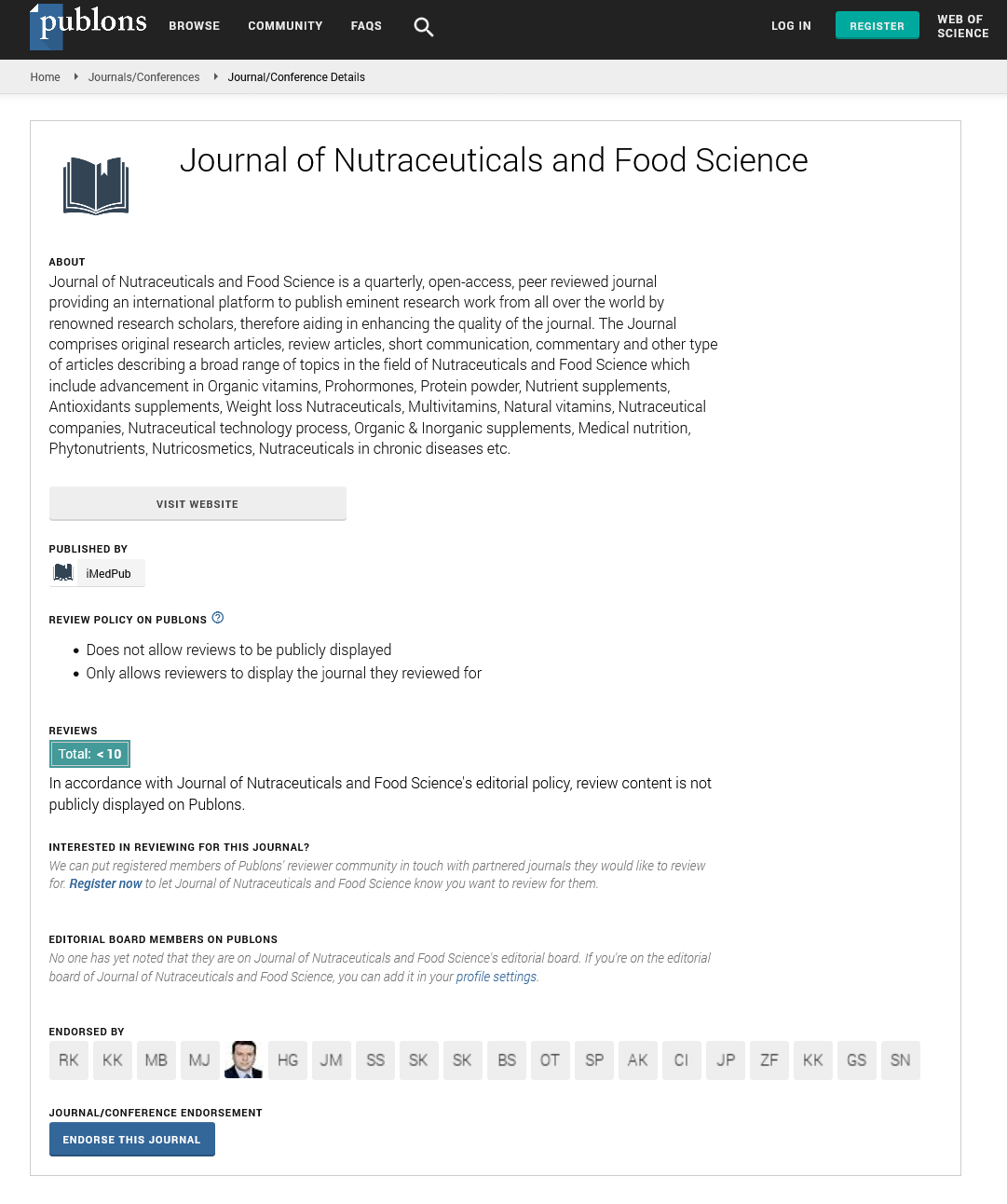Abstract
Chemo-preventive Properties of Essential Oils Obtained from Boswellia carterii and B. sacra in Combination with Insoluble ÃÆà ½Ãâò-Glucan
Background: B. carterii (Frankincense) and B. sacra (Sacred) essential oils (EOs) have been used for many centuries in several medicinal applications. More recently, those EOs were investigated for their anticancer properties and used in combination with other natural compounds resulting in enhanced biological activities. To that extend, yeast-derived β-glucan have shown remarkable anticancer and chemo-preventive potential in the past decades whether tested alone or in combination. In this context, the in vitro chemo-preventive, antiradical and antiproliferative effects of B. carterii (Frankincense) and B. sacra (Sacred) EOs used alone and in combination with Insoluble β-glucan from Saccharomyces boulardii on colorectal cancer (CRC) were investigated.
Methods and findings: Essential oils and insoluble β-glucan from Saccharomyces boulardii cell wall were assayed for their capacity to increase the specific activity of NAD(P)H: quinone reductase (QR), scavenge radicals and inhibit growth of human CRC cells (CHO-K1 and HT-29 cells). Results demonstrated that B. carterii (Frankincense) and B. sacra (Sacred) scavenged superoxide anions and similarly inhibited growth of two human CRC cell lines. This study also reported the increase of QR activity as a novel mechanism of action of these EOs in cancer prevention and demonstrated that insoluble β-glucan from S. boulardii cell wall enhanced the capacity of B. carterii (Frankincense) EO to increase QR specific activity as oppose to Sacred oil. Finally, Sacred oil efficiently scavenged superoxide anions and expressed cancerous cell-specific cytotoxicity when opposed to B. carterii (Frankincense) EO.
Conclusion: Results obtained in this study represents the first evidence thatBoswellia EOs can enhance QR activity when used alone or in combination with insoluble β-glucan from S. boulardii cell wall, hence suggesting a novel combination to investigate in future investigations. Complete characterization ofBoswellia EOs and further biological analyses will be required to identify component(s) that potentially responsible for such chemoprevention activities.
Author(s):
Olivier Fortin , Blanca Aguilar-Uscanga , Khanh Dang Vu , Stephane Salmieri , Jing-Cheng Zhao and Monique Lacroix
Abstract | Full-Text | PDF
Share this

Google scholar citation report
Citations : 393
Journal of Nutraceuticals and Food Science received 393 citations as per google scholar report
Journal of Nutraceuticals and Food Science peer review process verified at publons
Abstracted/Indexed in
- Google Scholar
- Publons
- Secret Search Engine Labs
Open Access Journals
- Aquaculture & Veterinary Science
- Chemistry & Chemical Sciences
- Clinical Sciences
- Engineering
- General Science
- Genetics & Molecular Biology
- Health Care & Nursing
- Immunology & Microbiology
- Materials Science
- Mathematics & Physics
- Medical Sciences
- Neurology & Psychiatry
- Oncology & Cancer Science
- Pharmaceutical Sciences


